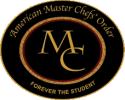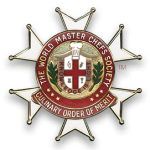When choosing restaurant dinnerware for your establishment, there are many factors to consider.
From the size, shape, and style of each restaurant dinnerware set to the type of material you select, one variable can make all the difference when it comes to commercial dinnerware.
With the pressure to “get it right” so you don’t waste your supplies budget, and the sheer volume of restaurant dinnerware sets and styles out there, narrowing down your options can be tiring.
But it doesn’t have to be.
As commercial dinnerware suppliers for more than 40 years, we know a thing or two about selecting the best dinnerware sets for your commercial needs.
In this comprehensive guide to selecting commercial dinnerware, we’ll talk you through your options, from materials and styles to the exact dishes you might need.
Let’s get started!
Breaking down restaurant dinnerware materials
Choose commercial dishes wisely, and you can speed up restaurant operations, enhance the dining experience, and better support the staff serving meals and washing dishes.
So, to make your job that bit easier, we’ve broken down the pros and cons of each commercial dinnerware material below.
Plastic dinnerware
The advantages of plastic dishes
Plastic is the perfect choice for fast food, cafeteria, or casual restaurants where you offer quicker food service. You can easily stack, knock, or drop it without risking cracks and breakages. Plastic is also much more affordable than other materials.
The disadvantages of plastic dishes
The first and most obvious drawback of using this material is the environmental impact that comes along with it. Another issue with plastic dishes is that they can discolor with prolonged exposure to stain-inducing ingredients.
Melamine dinnerware
The advantages of melamine dinnerware
One of the key advantages of using melamine dinnerware in your commercial establishment is that melamine is made from plant cellulose and resin – making it a more environmentally-friendly alternative to plastic dishes
The disadvantages of melamine dinnerware
This material isn’t a great option if you need to heat your melamine dishes under a heat lamp or in a microwave, as it can blister, crack, or melt. You also cannot use bleach cleaning products on it as it will damage the melamine.
Ceramic dinnerware
The advantages of ceramic dinnerware
Ceramic dinnerware is all made from clay and encompasses stoneware, porcelain, and china dinnerware (they’re all simply manufactured differently). Ceramic is dishwasher safe, durable, and easy to clean. It can also cope with extreme temperatures – perfect for salamanders!
The disadvantages of ceramic dinnerware
Ceramic dinnerware can be too heavy for some dining environments, like fast food restaurants or even large buffets. It can also shatter if dropped, so it won’t work well if you need a shatter-proof dinnerware set.
Porcelain dinnerware
People often ask, “what’s the difference between ceramic and porcelain dishes?” The key difference is the manufacturing process – making porcelain slightly more durable, thin, and glossy than ceramic. It’s also usually slightly more expensive than ceramic.
The advantages of porcelain dinnerware
Porcelain is a top choice for dining establishments for several reasons. Porcelain is stain and scratch resistant and can be used safely in a microwave, oven, or dishwasher. It’s also a very durable dinnerware option that can withstand rough handling and doesn’t break or chip easily.
The disadvantages of porcelain dinnerware
Though durable, porcelain can easily break or crack when dropped, something that wouldn’t happen with plastic dinnerware. Porcelain can also become stained if you leave strongly-colored foods (like Turmeric or Squid Ink) on it for too long.
Choosing the right commercial dinnerware “style”
When you have figured out what material will work best for your commercial dining environment, you must choose the restaurant dinnerware style that makes sense for your unique dining experience.
Sleek
Sleek commercial dinnerware styles usually come in the form of ceramic dinnerware sets, whether that’s a bone china, porcelain or stoneware version of ceramic. Think clean lines, dainty aesthetics, and simple accents.
Modern
Modern commercial dinnerware sets usually consist of unusual or “artistic” shapes, like angled ceramic bowls or square plates, and alternative colors, like black. Modern commercial dinnerware is very common in fine-dining restaurants.
Traditional
Traditional restaurant dinnerware will typically encompass bone china styles with intricate patterns, like a restaurant plate adorned with colorful decorations or even ceramic commercial dishes with raised embellishments, like dots or lines, giving the nod to the past.
Rustic
Rustic dinnerware usually means organic shapes, colors, and soft silhouettes. This dinnerware style generally suits a family-style or casual dining environment and works incredibly well with dining establishments that use organic, raw, or locally-sourced ingredients.
Quirky
Quirky dinnerware sets can work really well for fast food establishments or “hipster” restaurants that like to stand out. Think bright colors, unique shapes, and exciting patterns giving your plastic or ceramic dinnerware an edge.
Commercial restaurant dishes to consider
At this point you might be wondering, “what commercial dishes do I actually need?” To help you decide, here are the most commonly used dinnerware pieces to accompany your restaurant flatware.
Commercial dinner plates
You can use a wide variety of plates to enhance and support your dining experiences, including dinner plates, teacup saucers, appetizer plates, niche plates (like a long sushi plate), salad plates, bread plates, and dessert plates.
Commercial bowls
Whether shallow, deep, angled, or straight, commercial bowl options are almost endless and include options like dinner bowls, cereal bowls, fruit bowls, soup bowls, pasta bowls, and salad bowls,
Commercial serving dishes
You can choose to serve your dishes using commercial serving dinnerware using components like serving plates, serving bowls, serving platters, and serving jugs.
Need help choosing the best dinnerware for your needs? Talk to our experts!
We hope this guide to selecting commercial dinnerware has helped you to better understand what options are available and what might work well for your commercial setting. If you’re still unsure, why not talk to our commercial dinnerware specialists at Corby Hall?
We’re America’s go-to commercial dinnerware provider, celebrating 40+ years in business and more than 5,000 happy customers on our books. With our high-quality products, commitment to service, and promise never to discontinue a line, trust you’ll receive the best support in the business to elevate your dining experiences when you choose Corby Hall.



